OUR ENSEMBLES
The word gamelan refers to several types of ensembles comprised of bronze, iron, wood, and/or bamboo percussion instruments, found throughout the Indonesian islands of Bali and Java. Gamelan Sekar Jaya is comprised of four kinds of gamelan —currently including angklung, gong kebyar, jegog, and gender wayang—as well as a dance ensemble. True to the Balinese tradition, GSJ musicians and dancers learn through direct imitation and training from teachers, without the aid of notation. In various combinations, these ensembles have presented over five hundred concerts in the U.S., Canada, and Mexico.
If you are interested in booking one of GSJ’s ensembles at your venue or event, please contact us. In addition to concert performances and classes at our Berkeley banjar, GSJ also hosts extensive educational programs. We offer workshops and classes in Bay Area schools and community centers, bringing the Balinese arts to diverse local audiences.
GAMELAN ANGKLUNG
The gamelan angklung is one of the most popular types of orchestras in Bali, requiring about twenty musicians. Tuned to a four-tone scale in slendro tuning, the gamelan angklung presents a cheerful, open, and rhythmically intricate musical landscape, expressed in the fluid grace of its traditional repertoire.
GAMELAN GONG KEBYAR
The gamelan gong kebyar is the most prevalent type of bronze orchestra in Bali, requiring about 25 musicians. It takes its name from the dynamic kebyar style which was born in the early twentieth century-a time of tumultuous political and social change, reflected in music of contrasting moods, and powerful, virtuosic character.
GAMELAN JEGOG
GSJ’s Gamelan Jegog is one of the only ensembles of its kind outside of Bali. Originating from Western Bali, it is an orchestra of bamboo marimbas, with keys (tubes) ranging from small to gigantic. The largest tubes, up to three meters long, are used for the bass jegogan, for which the ensemble is named.
GENDER WAYANG
Music for the Balinese shadow puppet theater (wayang) is provided by four musicians playing ten-keyed gender—one of Bali’s most technically challenging yet rewarding instruments. Because of its role in dramatic accompaniment, music for the Gender Wayang ensemble is wide ranging both in mood and character.
DANCE ENSEMBLE
Like Bali’s music traditions, Balinese dance encompasses a wide range of styles and forms. This is no surprise, since dance and music co-evolved and are seen as inseparable: Details of music and dance are tightly coordinated, and an ideal of perfect unity is sought in every gesture, nuance, expression, phrase, and rhythmic change.


